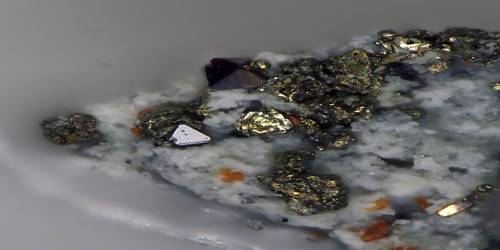According to research by experts from the National Renewable Energy Laboratory and Xerox PARC, greenhouse gas emissions from air conditioners are predicted to rise as economic expansion drives efforts to control both temperature and humidity.
The study, titled “Humidity’s Impact on Greenhouse Gas Emissions from Air Conditioning,” is published in the journal Joule and looks at the environmental impact of managing humidity.
While the energy consumed to run air conditioners has an obvious impact on greenhouse gas emissions, the impact of removing moisture from the air has remained unknown until now. The researchers discovered that managing humidity accounts for nearly half of all energy-related emissions, with temperature accounting for the other half.
“It’s a challenging problem that people haven’t solved since air conditioners became commonplaces more than a half-century ago,” said Jason Woods, an NREL senior research engineer and co-author of the new study.
His co-authors from NREL are Nelson James, Eric Kozubal, and Eric Bonnema. The collaborators from Xerox PARC, an R&D company working on ways to remove humidity more efficiently from the air, are Kristin Brief, Liz Voeller, and Jessy Rivest.
The researchers pointed out that climate change is both a cause and a consequence of the increased requirement to cool the air. Can a small amount of moisture in the air can make people feel uneasy and even cause mold and mildew to grow in structures.
Furthermore, using commercially available air conditioning technology to control indoor humidity has three environmental consequences: 1) They use a lot of electricity, 2) they use and leak CFC-based refrigerants with a global warming potential of 2,000 times that of carbon dioxide, and 3) they emit greenhouse gases during the production and delivery process.
We’ve already made the existing, century-old technology nearly as efficient as possible. To get a transformational change in efficiency, we need to look at different approaches without the limitations of the existing one.
Jason Woods
According to the study, air conditioning emits the equivalent of 1,950 million tons of carbon dioxide per year, accounting for 3.94 percent of worldwide greenhouse gas emissions. Energy used to manage temperature accounts for 531 million tons while removing humidity accounts for 599 million tons.
The remaining 1,950 million tons of CO2 come from refrigerant leaks that cause global warming, as well as emissions from the production and transportation of air conditioning equipment.
Managing humidity with air conditioners has a greater impact on global warming than controlling temperature. As customers in more nations, particularly India, China, and Indonesia, rapidly install more air conditioners, the situation is projected to intensify.
“It’s a good and a bad thing,” Woods said. “It’s good that more people can benefit from improved comfort, but it also means a lot more energy is used, and carbon emissions are increased.”
The researchers divided the planet into a fine grid measuring 1 degree of latitude by 1 degree of longitude to compute the emissions to regulate both temperature and humidity.
The following parameters were taken into account inside each grid cell: population, gross domestic product, estimated air conditioner ownership per capita, grid carbon intensity, and hourly weather. They ran approximately 27,000 simulations for sample commercial and residential structures all throughout the world.
Climate change is raising global ambient temperatures and humidity, making it hotter and more humid. The researchers assessed the impact of changing climate on air conditioner energy use by 2050 as part of the study.
For example, the study predicts that by 2050, air conditioner energy demand will grow by 14% in the warmest region investigated (Chennai, India) and by 41% in the mildest climate tested (Milan, Italy). The impact of rising global humidity on emissions is expected to be greater than that of rising global temperatures.
“We’ve already made the existing, century-old technology nearly as efficient as possible,” Woods said. “To get a transformational change in efficiency, we need to look at different approaches without the limitations of the existing one.”
Existing vapor compression technology is optimized to use a “vapor compression cycle” to cool our buildings. This cycle uses toxic refrigerants to chill air to a temperature low enough to wring out moisture, but it frequently overcools the air and wastes energy.
Improving the vapor compression cycle has reached its practical and theoretical limits, indicating that a new method of cooling and dehumidifying buildings is required.
New solutions that divide the cooling and humidity control problem into two processes have the potential to boost efficiency by up to 40%. The utilization of liquid desiccant-based cooling cycles, such as the several liquid desiccant air conditioning technologies that NREL is now developing with a number of partners, including Emerson and Blue Frontier, is one such technology space.
The use of liquid desiccants, according to the researchers, significantly alters how humidity is controlled and has a theoretical efficiency limit that is ten times greater than the vapor compression cycle alone.
In 2050, a hypothetical system with half the new limit would reduce cooling-energy emissions by 42%, avoiding 2,460 million tons of CO2. The research published in Joule was financed by the Department of Energy’s Building Technologies Office.
















